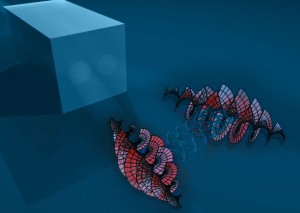Quantum mechanics has opened up various possibilities for the packaging and processing of information in ways that far exceed what was possible only a few years ago using “classical” methods. One of the most highly developed of these methods is secure communication based on quantum key distribution (QKD). The idea here is for data to be encoded using a traditional key or “one-time pad.” Quantum mechanical procedures are then used to transmit this key from the sender to the receiver. These quantum procedures ensure that if an eavesdropper intercepts this message, the quantum features of the transmitted photons will be modified in a manner that can easily be discerned by the receiver. The original demonstration of QKD made use of the polarization of light to encode information onto an individual photon, and thus each photon could carry only one bit of information. In contrast, we are developing a system in which we encode information onto individual photons using the orbital angular momentum (OAM) states of light. Because there is no limit to how much OAM a single photon can carry, there is in principle no limit to how much information can be carried by an individual photon in a QKD system. Our immediate goal is to impress as many as eight bits of information on a photon. We are doing this by diffracting individual photons from a computer-generated hologram written onto a spatial light modulator. We are also studying the impact that atmospheric turbulence could have on the propagation of these photons, which could lead to a degradation of the information content.
Secure communications
